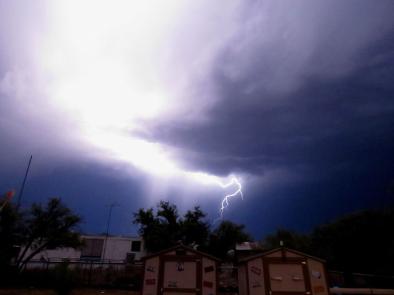Science Source
Heat wave probability in the changing climate of the Southwest US
- States that analyses of observed non-Gaussian daily minimum and maximum temperature probability distribution functions (PDFs) in the Southwest US highlight the importance of variance and warm tail length in determining future heat wave probability
- States that even if no PDF shape change occurs with climate change, locations with shorter warm tails and/or smaller variance will see a greater increase in heat wave probability, defined as exceedances above the historical 95th percentile threshold, than will long tailed/larger variance distributions
- Projections from ten downscaled CMIP5 models show important geospatial differences in the amount of warming expected for a location
- Finds that changes in heat wave probability do not directly follow changes in background warming
- Projected changes in heat wave probability are largely explained by a rigid shift of the daily temperature distribution
- Finds that in some locations where there is more warming, future heat wave probability is buffered somewhat by longer warm tails
- Finds that in other parts of the Southwest where there is less warming, heat wave probability is relatively enhanced because of shorter tailed PDFs
- Concludes by saying the effects of PDF shape changes are generally small by comparison to those from a rigid shift, and fall within the range of uncertainty among models in the amount of warming expected by the end of the century
Related Content
Headline

Aug 21, 2019 | Colorado Springs Gazette
Colorado Springs ties temperature record amid statewide heat wave
Headline

Aug 20, 2019 | Earther
It Could Crack 120 Degrees in Death Valley as Extreme Heat Roasts Much of the U.S.
Headline

Aug 20, 2019 | The Verde Independent
Weather Service: High pressure stalling monsoon storms
Headline

Aug 20, 2019 | Times of San Diego
Temperatures Could Reach 119 in County Deserts Amid Heat Wave


